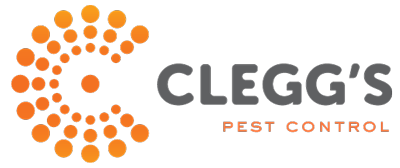What You Need to Know About Termites
Termites are ancient insects that eat dead wood and cellulose products like fallen leaves and detritus. In a natural environment, when a tree is old or diseased and falls to the ground, termites and other wood-boring insects will eventually help to “process” the fallen tree, returning nutrients to the ground to continue the cycle. Unfortunately, termites do not differentiate between the wood of a fallen tree and that in your house. They will eat the first source of food they come to—and that’s bad for homeowners.
Termites live in colonies. The colonies are made up of primary and secondary reproductives, nymphs, workers, and soldiers. Unlike ants, if the queen is eliminated there are plenty of other reproductives that can take over the egg-laying responsibilities. Termites require a different approach for control measures. There are several types of termites that live in North Carolina, with the most common being eastern subterranean termites and occasionally West Indian powder post termites (dry wood termites). Subterranean termites live underground and need constant moisture to survive. They create protective humidity controlled tunnels while searching for food above ground, and naturally expand their range as the colony grows. Powder post termites are a type of “dry wood termite,” meaning they live aboveground in wood and need very little moisture to survive. Typically, they infest furniture related items brought into North Carolina. Our winters are cold enough to prevent them from living outside year-round.
In most cases, homeowners will not be aware there are colonies on their property until the termites have found their way into the home and started to cause damage. Most new homes are treated during construction with a product that will typically control termites for five years. After that initial treatment’s effectiveness lessens, it is important for homeowners to re-treat the property or install a termite bait monitoring system to watch for signs of termites.
Common Signs of Termites
Here are some of the common signs you may have termites:
- The presence of mud tubes running up exterior or interior walls, gaps in the foundation, door jambs, etc.
- Damage to baseboards and drywall often leaves a “bubbled” effect where the paint on damaged wood appears to have “bubbling” where wood is eaten away
- Wood that appears to be papery-thin and has multiple layers of papery-thin sheets (the softer wood is eaten, and the harder “summer” wood is left behind)
- Wood that sounds hollow when you tap on it
- Swarms of winged termites (usually in spring as the weather warms and after rainfall)
- Clusters of wings in piles around the outside of your house, and possibly on the inside along window seals
Keeping Termites Away
While it is not possible to entirely eliminate the risk you will get termites, there are steps you can take to keep them from turning your house into an all-you-can-eat buffet. First, it is recommended for homeowners to contact a pest professional for a thorough termite inspection and termiticide treatment of your home for lasting protection from termites. Below are some steps you can take to inspect/ help protect your home yourself:
- Eliminate moisture in your home by ensuring your foundation and crawl space (if you have one) are kept dry (professionally installed commercial dehumidifiers work great when moisture is a confirmed problem)
- Repair any leaks in pipes and faucets
- Use splash blocks or hoses to divert runoff from gutters away from the house
- Seal openings to your house around pipes and other entry points
- Never store firewood near your house
- Keep wood mulch away from the foundation of your home and keep bushes trimmed so they do not touch your house
- Make sure that any wood on your house does not come in contact with the ground
- Do a periodic home inspection, looking closely at the foundation and porch/deck for signs of termites
- If you buy used wood furniture, check it closely to make sure you are not bringing someone else’s termites into your house
Research shows that termites cause more than $5 billion in damage every year. The good news is that close monitoring can catch many problems early, before too much damage is done. Tools like the Sentricon® Termite Colony Elimination System, Premise®, and Termidor® are available to eliminate these hungry insects.
If you believe you may have termites, don’t wait to get your home inspected! Give Clegg’s a call. Our pest professionals can help tell you if you have termites and offer a solution to meet your specific needs. Contact us today.
Termite Control Servicing The North Carolina Area
Clegg’s Pest Control is proud to provide local termite control solutions across North Carolina, including these nearby cities:
- Termite control in Asheville, NC
- Termite control in Charlotte, NC
- Termite control in Clinton, NC
- Termite control in Durham, NC
- Termite control in Fayetteville, NC
- Termite control in Greenville, NC
- Termite Control in Kernersville, NC
- Termite control in Morehead City, NC
- Termite control in New Bern, NC
- Termite control in Raleigh, NC
- Termite control in Smithfield, NC
- Termite control in Southport, NC
- Termite Control in Wilmington, NC

